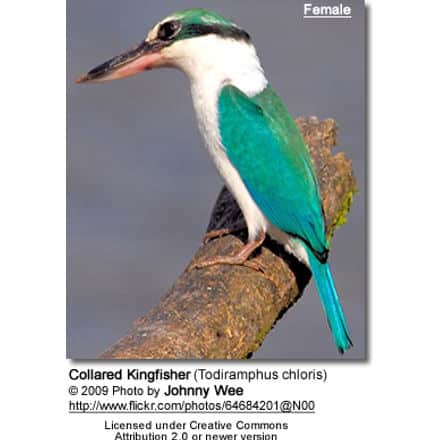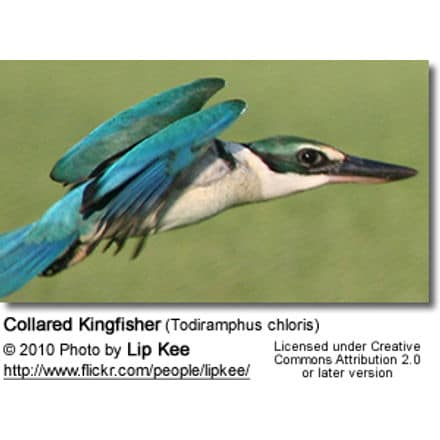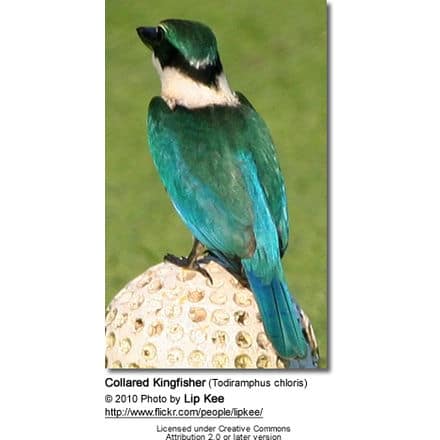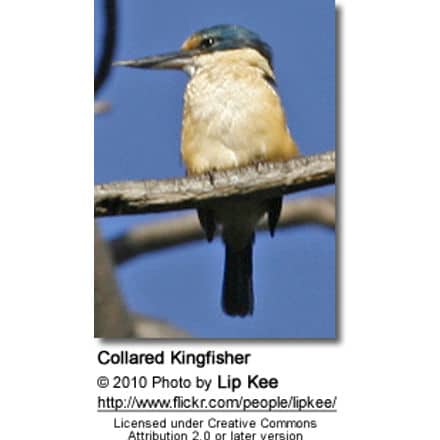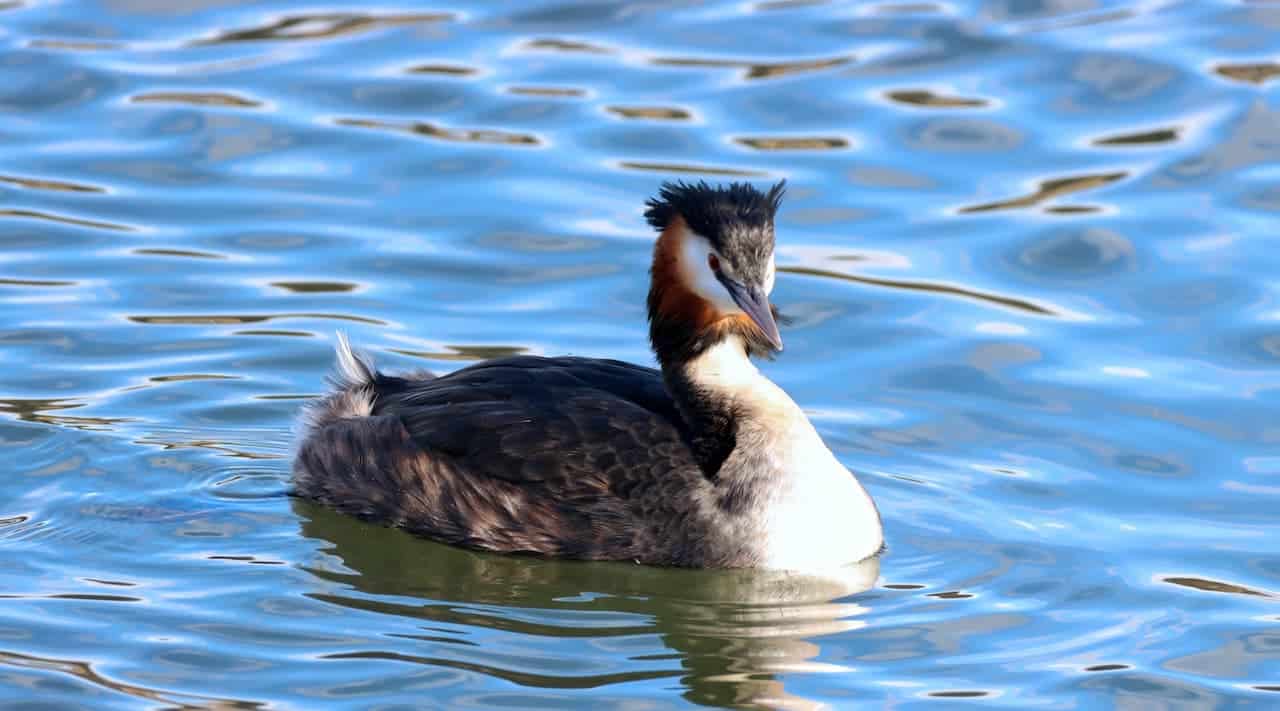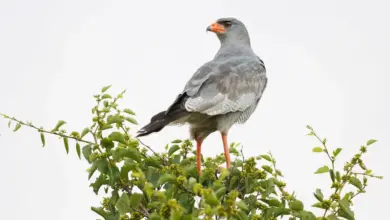Collared Kingfishers (Todiramphus chloris)
The Collared Kingfishers (Todiramphus chloris) – also known as Black-masked Kingfishers, White-collared Kingfishers or Mangrove Kingfishers, the latter referencing their preferred habitat, mangroves.
49 subspecies are currently recognized.
Tree Kingfisher Information … Tree Kingfisher Photo Gallery
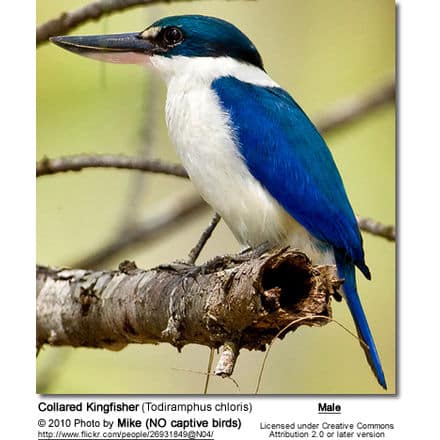
Distribution / Range
The Collard Kingfishers have a wide range extending from the Red Sea across southern Asia and Australasia to Polynesia.
They inhabit the coastlines of Northern and Northeastern Australia.
It is most commonly found in coastal areas, particularly in mangrove swamps. It also inhabits farmland, open woodland, grassland and gardens. In some parts of its range, especially on islands, it can be seen further inland, ranging into forest or into mountain areas.
Birds are often seen perching conspicuously on wires, rocks or bare branches.
Subspecies and Ranges
- Todiramphus chloris chloris (Boddaert, 1783) – Nominate Race
- Range: Talaud and Sangihe islands south through Sulawesi, Banggai and Sula Islands (North Maluku in Indonesia) to Lesser Sundas (from Lombok eastwards) and east to western Papuan Island and northwestern New Guinea (along the coasts of Vogelkop and Onin Peninsulas)
- Todiramphus chloris abyssinica / abyssinicus (Pelzeln, 1856)
- Range: The most westerly subspecies. Found in the patches of mangroves in northeastern Africa (Eritrea), along the Southern Red Sea coasts from northeastern Sudan to northwestern Somalia and in western Arabia.
- Todiramphus chloris kalbaensis (Cowles, 1980) – Endangered species with an estimated population of 55 pairs or less
- Range: Southern Arabian coast of United Arab Emirates (Khawr Kalba or Khor Kalba) and breeding has also occurred in Khor Shinass in northwestern Oman
Todiramphus chloris vidali (Sharpe, 1892)- Range: Western India from Ratnagiri south to Kerala
- Todiramphus chloris davisoni (Sharpe, 1892)
- Range: Andaman Islands and nearby Cocos Island located off the shore of Costa Rica
- Todiramphus chloris occipitalis (Blyth, 1846)
- Range: Nicobar Islands situated in the eastern Indian Ocean.
- Todiramphus chloris humii (Sharpe, 1892)
- Range: Coasts of West Bengal east to Myanmar (including Mergui Archipelago) and south to Peninsular Malaysia, Tioman Island and northeastern Sumatra (an island in western Indonesia)
- Todiramphus chloris armstrongi (Sharpe, 1892)
- Range: Interior of Myanmar and Thailand, Indochina and eastern China (Shaweishan Island in Jiangsu)
- Todiramphus chloris laubmannianus (Grote, 1933)
- Range: Sumatra (except NE coast) to Borneo, including Bangka, Belitung and other intervening islands
- Todiramphus chloris chloropterus (Oberholser, 1919)
- Range: Islands off western coast of Sumatra (Simeulue south to Sipora)
- Todiramphus chloris azelus (Oberholser, 1919)
- Range: Enggano I (off southwestern Sumatra)
- Todiramphus chloris palmeri (Oberholser, 1919)
- Range: Java, Bali, Bawean and Kangean Islands located in the Java Sea
- Todiramphus chloris collaris (Scopoli, 1786)
- Range: Philippines
- Todiramphus chloris sordidus (Gould, 1842)
Todiramphus chloris pilbara (Johnstone, 1983)- Range: northwestern Australia from De Grey River west to Exmouth Gulf
- Todiramphus chloris teraokai (Nagamichi Kuroda, 1915)
- Range: Palau Islands in the Pacific Ocean east of the Philippines
- Todiramphus chloris owstoni (Rothschild, 1904)
- Range: Northern parts of Northern Marianas (Asuncion, Agrihan, Pagan, Almagan)
- Todiramphus chloris albicilla (Dumont, 1823)
- Range: Southern parts of Northern Marianas (Saipan, Tinian)
- Todiramphus chloris orii (Takatsukasa and Yamashina, 1931)
- Range: Southern parts of Northern Marianas (Rota)
- Todiramphus chloris matthiae (Heinroth, 1902)
- Range: St Matthias Islands (North-central Bismarck Archipelago)
- Todiramphus chloris nusae (Heinroth, 1902)
- Range: New Hanover, New Ireland (except southwestern parts) and Feni Islands – an island group in Papua New Guinea
- Todiramphus chloris novaehiberniae (Hartert, 1925)
- Range: Southwestern New Ireland
- Todiramphus chloris bennetti (Ripley, 1947)
- Range: Nissan Island – the largest of the Green Islands of Papua New Guinea
Todiramphus chloris stresemanni (Laubmann, 1923)- Range: Islands located between mainland New Guinea and New Britain (Witu, Umboi, Sakar, Long and Tolokiwa)
- Todiramphus chloris tristrami (E. L. Layard, 1880)
- Range: New Britain
- Todiramphus chloris colonus (Hartert, 1896)
- Range: Louisiade Archipelago
- Todiramphus chloris alberti (Rothschild and Hartert, 1905)
- Range: Western and central Solomon Islands (east of Papua New Guinea), from Buka and Bougainville east to Nggela Islands ( also known as the Florida Islands) and Guadalcanal (Isatabu) – a tropical island in the South-Western Pacific
- Todiramphus chloris pavuvu (Mayr, 1935)
- Range: Pavuvu – the largest of the Russell Islands in Central Province, Solomon Islands – located Northwest of Guadalcanal
- Todiramphus chloris mala ( Mayr, 1935)
- Range: Malaita Island located in the eastern Solomon Islands east of Papua New Guinea.
- Todiramphus chloris solomonis (E. P. Ramsay, 1882)
- Range: San Cristobal and adjacent islands (eastern Solomon Islands east of Papua New Guinea)
- Todiramphus chloris sororum (I. C. J. Galbraith and E. H. Galbraith, 1962)
- Range: Malaupaina and Malaulalo (eastern Solomon Islands east of Papua New Guinea)
- Todiramphus chloris amoenus (Mayr, 1931)
- Range: Rennell and Bellona (eastern Solomon Islands east of Papua New Guinea)
- Todiramphus chloris ornatus (Mayr, 1931)
- Range: Nendo and Tinakula (northwestern Santa Cruz Islands in the Pacific Ocean)
- Todiramphus chloris brachyurus (Mayr, 1931)
- Range: Reef or Swallow Is (northcentral Santa Cruz Islands in the Pacific Ocean)
- Todiramphus chloris vicina (Mayr, 1931)
- Range: Duff Is (NE Santa Cruz Islands in the Pacific Ocean)
Todiramphus chloris utupuae (Mayr, 1931)- Range: Utupua I (C Santa Cruz Islands in the Pacific Ocean)
- Todiramphus chloris melanodera (Mayr, 1931)
- Range: Vanikoro I (S Santa Cruz Islands in the Pacific Ocean)
- Todiramphus chloris torresianus (Mayr, 1931)
- Range: Hiu and Loh in Torres Islands (northern Vanuatu Islands situated in the South Pacific Ocean)
- Todiramphus chloris santoensis (Mayr, 1931)
- Range: Banks Island south to Espiritu Santo and Malo (northcentral Vanuatu Islands situated in the South Pacific Ocean)
- Todiramphus chloris juliae (Heine, 1860)
- Range: Ambae and Maewo south to Efate (central Vanuatu Islands situated in the South Pacific Ocean).
- Todiramphus chloris erromangae (Mayr, 1938)
- Range: Erromango and Aneityum (southern Vanuatu Islands situated in the South Pacific Ocean)
- Todiramphus chloris tannensis (Sharpe, 1892)
- Range: Tanna (southern Vanuatu Islands situated in the South Pacific Ocean)
- Todiramphus chloris regina (Mayr, 1941)
- Range: Futuna Island in central Polynesia
- Todiramphus chloris pealei (Finsch and Hartlaub, 1867)
- Range: Tutuila Island (American Samoa) located in the south-central Pacific Ocean
- Todiramphus chloris manuae (Mayr, 1941)
- Range: Ofu, Olosega and Tau, in Manua Island in the South Pacific (American Samoa)
- Todiramphus chloris vitiensis (Peale, 1848)
- Range: Vanua Levu, Taveuni, Viti Levu, Koro, Ovalau, and Ngau (Fiji located in the South Pacific Ocean northeast of New Zealand’s North Island)
- Todiramphus chloris marinus (Mayr, 1941)
- Range: Lau Archipelago (eastern Fiji located in the South Pacific Ocean northeast of New Zealand’s North Island)
- Todiramphus chloris eximius (Mayr, 1941)
- Range: Kadavu (southern Fiji located in the South Pacific Ocean northeast of New Zealand’s North Island)
- Todiramphus chloris sacer (J. F. Gmelin, 1788)
- Range: Central and southern Tonga – an island group in the South Pacific Ocean
Description
This petite, brightly colored bird possesses dark blue or green wings, a tail, and a head. The head is striped, and the bill is very solid. The female’s coloring is not quite as bright as the male’s.
The Collared Kingfisher is a medium-sized kingfisher, measuring 22 to 29 cm in length (including the tail) and weighing about 51 to 90 grams.
The plumage varies from blue to green above while the underparts can be white or buff. There is a white collar around the neck, giving the birds its name. The large bill is black with a pale yellow base to the lower mandible (bill).
Their bodies are unusually configured. All Kingfishers are known for their stocky bodies, large heads, and long, thick, sharply pointed bills, shaped like a dagger. In those species that dive for fish, the bill is generally longer and more compressed; in those that hunt for prey on land, it is shorter and broader.
The bill seems disproportionate to the rest of the body, but it is designed for impaling and capturing its prey. Their legs are short and their tails broad and stout. Their strong feet support them while perching on branches.
Females tend to be greener than the males.
Immature birds are duller than adults with dark scaly markings on the neck and breast.
Calls / Vocalizations
It has a variety of calls which vary geographically. The most typical call is loud, harsh, and metallic and is repeated several times.
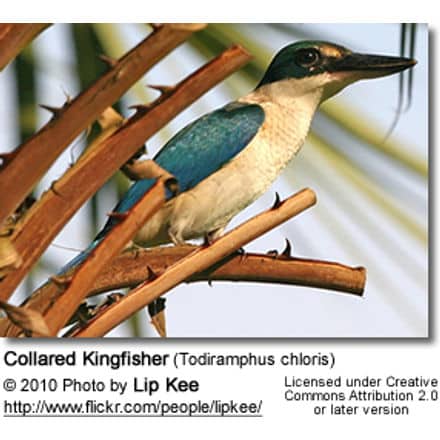
Diet / Feeding
Collared Kingfishers mostly feed on small crabs found in coastal regions; but will also take other animals, including insects, worms, snails, shrimps, frogs, lizards, and small fish. Any indigestible remains are regurgitated as pellets.
They perch almost motionless for long periods waiting for prey.
Kingfishers are highly territorial birds. They will locate a prime area based on food sources, desirable perching trees and safe roosting sites. Like most birds, they will search for their food in the mornings and evenings. If the weather is cooler, they will also hunt for food during mid-day.
The Kingfishers will often stab their prey, either with the bill closed or open, depending on the size of the prey; or they will their prey by beating them on the ground or perch to shatter the bones.
Cleanliness is important to Kingfishers; they will dive into the water to bathe, then fly to a perch to preen and dry their feathers in the sunlight. Some will even clean their heads using their wings. They will utilize a branch to clean their impressive bills, keeping them in excellent condition by scraping them back and forth.
Reproduction / Breeding
Collared Kingfishers typically nest in holes, which could be natural tree cavities or burrows excavated by the pairs themselves in a rotten tree, termite mounds or earth banks. They will also occupy old woodpecker holes.
They usually lay two to seven rounded whitish eggs, which are placed directly on the floor of the burrow with no nest material used. Both parents take part in incubating the eggs and feeding the chicks. The young birds leave the nest about 44 days after hatching.
The young grow quickly. After hatching, they are altricial (helpless, without feathers or down) and depend on their parents for care and feeding. But soon the young are able to travel toward the entrance of the tunnel where they wait for the adults to feed them. Eventually, they are fed on a perch near the entrance. Fledging can last a few days to a few weeks. After that, the young will be on their own and will feed themselves.
Two broods are often raised in a year.
Alternate (Global) Names
Chinese: ????, ???? … Czech: led?á?ek prom?nlivý, Lednácek zelenohlavý … Danish: Grøn Isfugl … Dutch: Witkraagijsvogel … Estonian: mangroovi-safiirlind … Finnish: Turkoosikalastaja … French: Martin-chasseur à collier blanc … German: Halsbandliest … Indonesian: Cekakak, Cekakak sungai, Raja udang kalung putih, Rato-rato, Takué … Italian: Martin pescatore dal collare, Martin pescatore dal collare bianco … Japanese: nanyoushoubin, nan’youshoubin, Nanyou-shoubin … Lithuanian: Žaliasis halcionas … Mamasa: sekke … Malay: Pekaka Bakau, Raja Udang … Norwegian: Jadeisfugl … Polish: lowiec obrozny, ?owiec obro?ny … Russian: ?????????? ???????? … Slovak: rybárikovec bielokrký … Spanish: Alción Acollarado, Alción de Cuello Blanco … Swedish: Halsbandskungsfiskare, Mangrovekungsfiskare … Thai: ??????????? … Turkish: ye?il yal? çapk?n?, ye?il yal?çapk?n? … Vietnamese: S? khoang c?
Beauty Of Birds strives to maintain accurate and up-to-date information; however, mistakes do happen. If you would like to correct or update any of the information, please contact us. THANK YOU!!!

